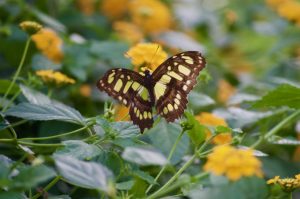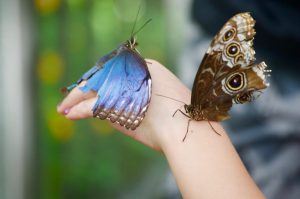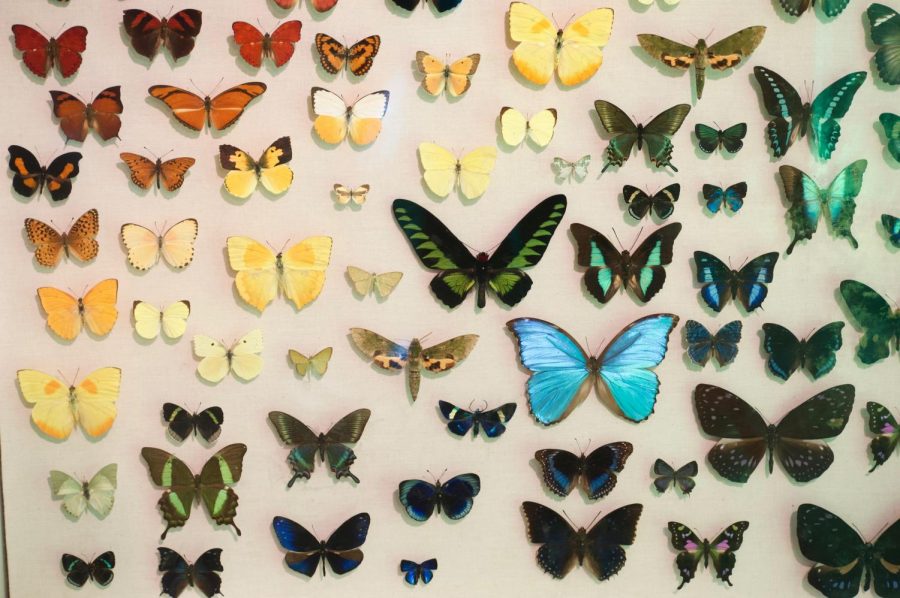Follow the Butterflies Down to Thanksgiving Point
September 29, 2019
Thanksgiving Point is widely known for kicking off Spring in Utah with its annual Tulip Festival, an extravagant floral onslaught of thousands of flowers imported from Holland. The nonprofit complex — consisting of a farm, a garden and two museums — is bringing another “transformative family learning” experience to Utah. The new “Butterfly Biosphere” is an all-inclusive insectarium with countless learning opportunities for anyone, no matter what age they may be.

The Butterfly Biosphere consists of several different sections, each one buzzing with different insects and learning activities. There is the Costa Rica Climber, which offers a hands-on experience with entomology field research. The Discovery Zone has interactive learning modules and an array of imported insects from all over the world. Finally, at the heart of the exhibit lies the Butterfly Conservatory, a glasshouse featuring 1,000 butterflies among various sustaining tropical plants. The conservatory area also features an Emergence Gallery where thousands of cocoons transform into butterflies right in the exhibit.
An exhibit of critters and crawlers from around the world was no easy feat to accomplish or put together. Marissa Harrison, the Head Entomologist of the Butterfly Biosphere, said the process began six years ago after a discussion of adding on another accessible exhibit. “We started off the design process by getting ideas from kids, kindergarteners at a local school,” Harrison said in her email. “What would they most like to see in a bug zoo?”
The actual process of creating a structure for a wide variety of insects took more time. After receiving permissions and instructions from the USDA on the design and creation of the conservatory, the process of collecting insects began. “In order to get all the bugs, we did some collecting here in Utah, we partnered with zoos and museums across the country to adopt their surplus bugs, we purchased from some local arachnid breeders (rather than people collecting from the wild) [sic] and we found butterfly suppliers that ethically source their butterflies from small farms in order to protect wild populations,” Harrison said.

The cultivation process resulted in 30-40 different species of butterflies in the conservatory at any given moment. Most of the species are native to Costa Rica, but “About 15% are native to Asian and African countries” according to Harrison. The Emergence Gallery adds to the butterfly count every day, and she estimates every morning they release 100 to 200 butterflies into the conservatory.
While the majority of the exhibit is dedicated to species all over the world, it also highlights Utah native insects. “We like to showcase a lot of our Utah natives to encourage guests to get outside, look closer and notice the diversity we have in our own backyards,” Harrison said. “Maybe when they see how our Madagascar Hissing Cockroaches help recycle nutrients by eating decomposing leaves and wood, they might be able to observe how the roly-polies in their backyard perform that same role.”

The new exhibit offers something for everyone, whether it’s learning about the various insects involved in our daily lives, taking the time to enjoy thousands of butterflies or simply discovering something new. At the heart of this exhibit is an invitation for a deeper understanding of what insects do for our ecosystem.
“Bugs are small but significant,” Harrison said. “If we want to keep our planet healthy, we need to ensure that the bugs are healthy, since they are foundational to the ecosystems where they live. Habitat loss and overusing pesticides are some of the biggest threats to our tiny neighbors.”
The Butterfly Biosphere Exhibit is currently available to the public. You can purchase tickets and learn more here.







